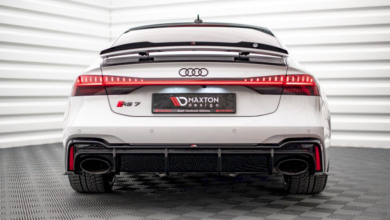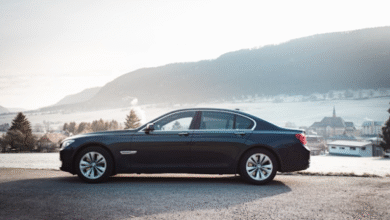The Power of B-Roll: How Extra Footage Elevates Your Videos

What makes one video feel professional while another looks like it was thrown together?
You guessed it, B-roll! That’s right. You don’t need a big budget or fancy equipment to make amazing videos. And we’re going to show you how.
For over twenty years, we’ve been making videos, and we see this all the time. The businesses that understand B-roll get better results. And those who skip it make videos that fall flat every time. At grizzlybearmedia.com.au, we help you get this right from the start.
In this article, we’ll walk you through:
- The real deal about B-roll and why every video needs it
- How smart footage choices connect with people on a deeper level
- Easy fixes B-roll provides for boring or confusing videos
- Success stories from our own work with clients
Stick with us as we break down everything you need to know about making your videos actually work. Let’s get started.
Understanding B-Roll Video
B-roll video is extra shots that enrich your main video content and make your story more dynamic. When you add these supporting visuals to a basic video, you create something that grabs and holds your audience’s attention.
For any kind of business, varied shots and images through B-roll help deliver your marketing messages in ways that stick with viewers.
Let’s break down the difference between your main footage and these supporting shots:
A-Roll vs. B-Roll: Distinguishing Narrative and Support
A-roll usually features your main characters or primary dialogue and forms the narrative backbone of your video project. Think of it as the meat of your message. Meanwhile, B-roll footage works behind the scenes to provide supporting visuals and context. These might be close-ups of products or wide shots of your workspace.
The benefit shows up during editing. B-roll eliminates those awkward jump cuts during editing that make videos feel choppy. While A-roll delivers your direct message, B-roll offers visual storytelling elements that keep the audience engaged. So in short, A-roll tells your story, while B-roll shows it in action.
Now that you understand what B-roll is, let’s dive into how it can really make your video content work harder for your business.
Boosting Video Impact with B-Roll
The most successful companies understand that B-roll footage can pull audiences deeper into their story than talking heads alone ever could. When viewers see both the person talking and the world they’re describing, their brains process the information more completely. As a result, your audience enjoys your videos more and watches them longer.
But you’ll need some strategies to work on before jumping on the streets with a camera and filming random footage. Before anything else, you need to understand how these supporting shots work with your main content to get the benefit of storytelling that connects with viewers.
Here’s how B-roll impacts the audience and boosts your content:
Building Narrative Depth and Viewer Connection
Effective B-roll footage allows you to build a richer visual story and pull your audience right into the scene. Think about a restaurant video where A-roll shows the chef talking, but B-roll captures steam rising from fresh pasta or customers laughing over dinner. These shots create emotional connections and keep your audience engaged by showcasing details that the primary dialogue might miss.
You’ll see that this approach works across all kinds of video formats, whether you’re creating educational content or advertising campaigns. Research from MIT and edX analysing 6.9 million video sessions found that videos alternating between main content and supporting visuals kept students engaged significantly longer than static presentations.
This same engagement boost applies to business videos when you mix talking heads with product shots or workplace scenes. The visual variety prevents viewer fatigue and gives people’s brains multiple ways to process your message. Instead of staring at one person talking for five minutes straight, viewers get fresh insights.
Creative Applications for Storytelling
What happens when you push B-roll beyond the ordinary? You create videos that make people stop scrolling. B-roll ideas like time-lapses, slow-motion, or even animation add unique visual flair that viewers remember.
For business or brand videos, capture behind-the-scenes footage of your team working or showing how your products are created. In this way, you are building trust as viewers see the real people and processes behind your brand.
Practical tip: Always shoot more B-roll than you think you need because having options makes editing a breeze and way more enjoyable. One of our clients doubled their video engagement simply by adding time-lapse footage of their design process.
All this talk about B-roll sounds great in theory, but how do you go about filming it? Let’s see how you can use B-roll techniques in practice like a pro.
Perfecting Your B-Roll Capture Techniques
There are some B-roll techniques like smart planning, getting your lighting right, and using sound cleverly that separate good footage from great footage. If you learn how to use these methods properly in your shoots, you’ll end up with supporting visuals that add something meaningful to your story.
Follow these strategies to improve your B-roll capture techniques:
Planning and Workflow for Seamless Inclusion
Before you shoot, make a script or detailed shot list for the specific B-roll footage you need to enhance your story. Think about your overall message and how your B-roll will support the main narrative of your video content. If you can’t figure out how to do that, then there are free stock videos available on websites like Pixabay to keep you inspired.
Say you’re filming a bakery owner talking about their morning routine. Your B-roll might include hands kneading dough, steam rising from fresh bread, and customers’ faces lighting up when they taste a croissant.
Good planning ensures all necessary footage is captured and saves your time and money. Trust us, there’s nothing quite like the sinking feeling of realising you forgot to film that one shot that would have made everything click.
Technical Considerations for Optimal Footage Quality
One of the most important things is the perfect match between your B-roll and your main footage. If they don’t match, viewers will notice something feels off, even if they can’t figure out what it is.
So, pay close attention to lighting and camera settings when you shoot B-roll to visually match with your main footage. Nothing screams amateur like mixing bright, sunny B-roll with dimly lit interview footage.
Beyond matching your lighting, you’ll also need to experiment with various camera angles and depths of field to make your B-roll video look professional. Also, when you learn how to use steady camera techniques, you’ll avoid shaky footage that might distract viewers from your message.
The Impact of Sound in B-Roll
Why do some B-roll shots feel alive while others fall flat? You’ll see the alive ones use sound effects that crank up the impact and immerse viewers in the B-roll footage. Even subtle background sound effects can add realism and depth. When you layer in these audio elements, your audience engages with the scene more naturally.
We recommend that when editing, you think about how sound effects can work alongside your B-roll visuals to tell a more comprehensive story. The crackle of a campfire or the gentle tap of keyboard keys pulls viewers right into the moment.
Sound is a bit like salt in your cooking. You don’t notice it when it’s done right, but when it’s missing or overdone, suddenly everything tastes wrong!
Your Video Success Story Starts Here
Most videos struggle to hold attention because they rely on talking heads alone. B-roll footage solves this problem by adding visual variety that keeps viewers engaged. And now you know that these techniques are completely learnable.
We’ve walked you through understanding A-roll versus B-roll and explored creative applications like time-lapses and behind-the-scenes footage. We also covered practical capture techniques such as planning, lighting matching, and sound design considerations.
Great video content requires the right strategy and execution. When you’re ready to create videos that truly connect with your audience, we’re here to help.




